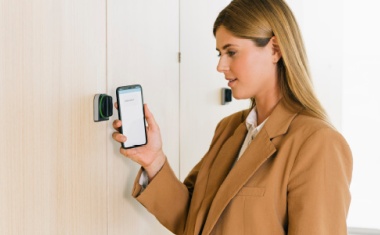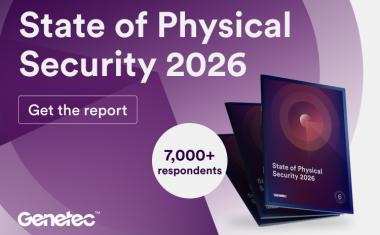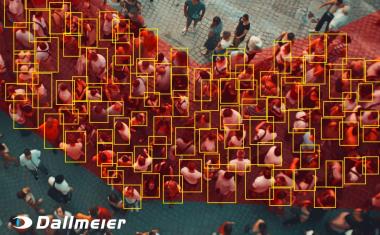Security and Access Control - Trends 2014
Last year saw a big rise in integrated systems in the security sector and 2014 looks set to follow this pattern with a number of technologies and trends coming to the fore. With In...
Last year saw a big rise in integrated systems in the security sector and 2014 looks set to follow this pattern with a number of technologies and trends coming to the fore. With Integration of different security, IT and building's services coming together, 2014 looks set to be a year of evolution rather than revolution - which from a business point of view ideally places the industry in a strong position to maintain growth.
Near Field Communications (NFC)
A technology that has been promising to do big things for some time is Near Field Communications (NFC). Whilst the technology for it has been available for some time, NFC˙s success will be determined by the tipping point from the number of enabled mobile devices and the public˙s willingness to use them to gain secure access to secure doorways. However the use of NFC has also been spurred on by a number of new compatible stand-alone locks which are especially well suited to access control using a smart device.
At the moment NFC is more popular in the consumer market. For example, landlords can send a key to the smartphone of a tenant which can then be activated or revoked as necessary (without the inconveniences of having to immediately issue traditional metal keys). History has shown us that public acceptance of a technology will push its adoption in the commercial market too, as experience of the technology and trust in its ability is cemented. NFC offers exciting possibilities for securing access and the signs are that the market is poised to increase adoption very soon.
Cloud-based Security
The adoption of cloud-based security is another area that has gained enormous ground in recent years and looks set to continue vehemently in 2014. Its fair to say there were concerns over the security of using the cloud voiced by some commentators and potential users when cloud-based access control was first muted. However, these were largely quashed by a wider acceptance of online use of services such as banking or retail, which have demonstrated that using IP needn't compromise vital security. As well as ease of use and installation, cloud-based services also rapidly roll out updates (which is particularly useful in an emergency situation) and there is no need to store large servers onsite (which could be attacked or hacked directly) - freeing space and resources.
Security Integration
The momentum of security integration is unlikely to slow in 2014. In fact it will continue to be a key market driver moving forward. The benefits are unquestionable, with the drive for efficiency savings being the core proposition. It enhances security reaction times „for instance if a door is forced the combined system will sound an alarm, lock-down key areas and direct the security team to the location of the potential incursion. Integration makes installation and upgrades easier and more cost-effective and it makes full use of legacy and existing systems. There is a massive growth in the use of BACnet protocols as well, which are adding a new level of software integration which is helping to move away from the remaining proprietary software that was once commonplace in the security industry.
There has been some debate within the security industry lately about the effectiveness and convenience of using passwords (both for physical to premises and logical access to IT systems). Integrated security systems allow authorized users to minimize the security details they have to memorize and are likely to gain further interest this year because of this advantage. The ability of integrated systems to intelligently provide access also means that workforce management is much easier using integrated security. From managing working hours to activating buildings services only when they are needed (and thus saving energy and resources), integration is providing intelligent solutions that will save real money in 2014.
The increase in mobile working and the use of smart devices will also continue to steer security demands, offering convenient and secure access to integrated systems. However mobile devices, by their highly portable nature, also pose a potential risk of unauthorized misuse. Accordingly though, mobile device manufacturers have beefed up handset security and this has offset many of the potential concerns in some ways echoing developments in the security industry itself. Long promoted as convenient and highly secure, biometrics recently got further mainstream consumer adoption with inclusion of fingerprint readers on iPhones late last year.
Biometrics
This use of biometrics has wider repercussions too. As with mobile devices, experience shows that consumer adoption helps to facilitate business use - so I would expect biometrics to find even greater popularity in 2014. The quality and accuracy of biometrics have rapidly improved in recent years, moving on from fingerprint readers and now readily incorporating facial recognition (which is very well suited to "clean" areas) and moving towards previously niche and more complicated systems such as palm vein and heartbeat recognition readers.
Security Legislation
As well as the technology, legislation is moving forward to meet the demands of the security industry. In 2014 we will see the publication of IEC 60839, entitled, Alarm and electronic security systems Electronic access control systems. It is being published at the IEC level (World standard) and also published by BSI as an EN (European) standard. As with all new standards, IEC 60839 will have a profound impact on the security industry in 2014 pushing providers further towards modern integrated systems and ensuring that they adhere to the developing needs of all customers that rely upon them.













